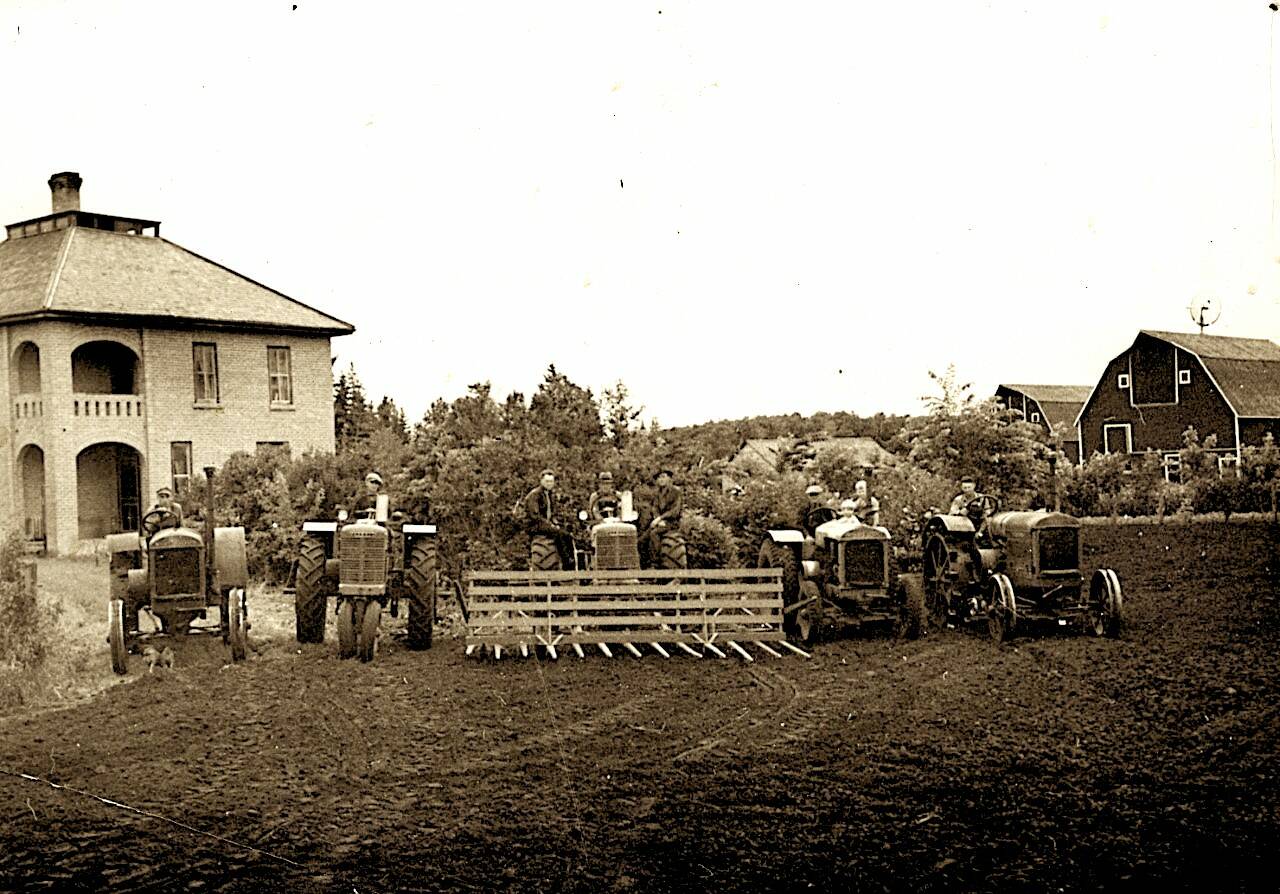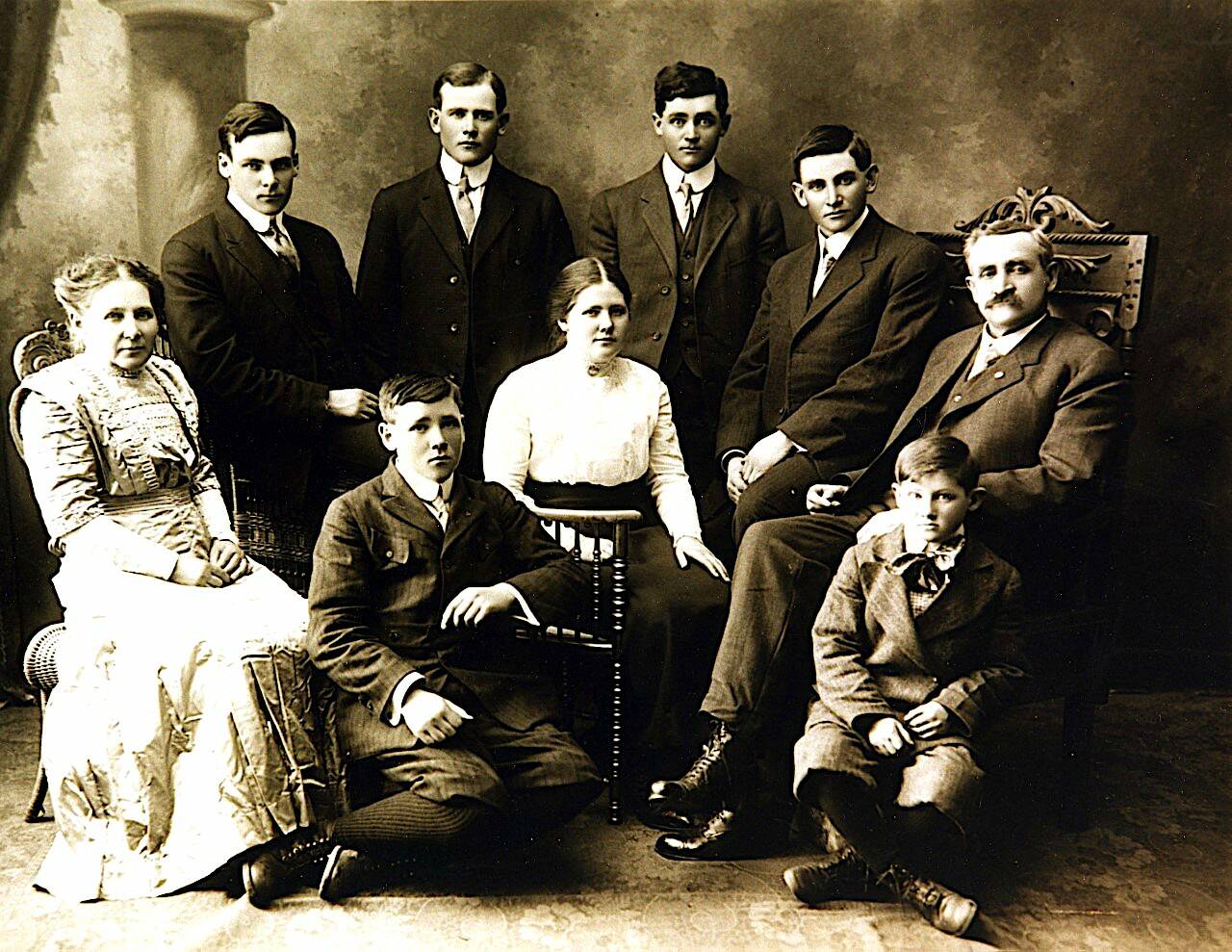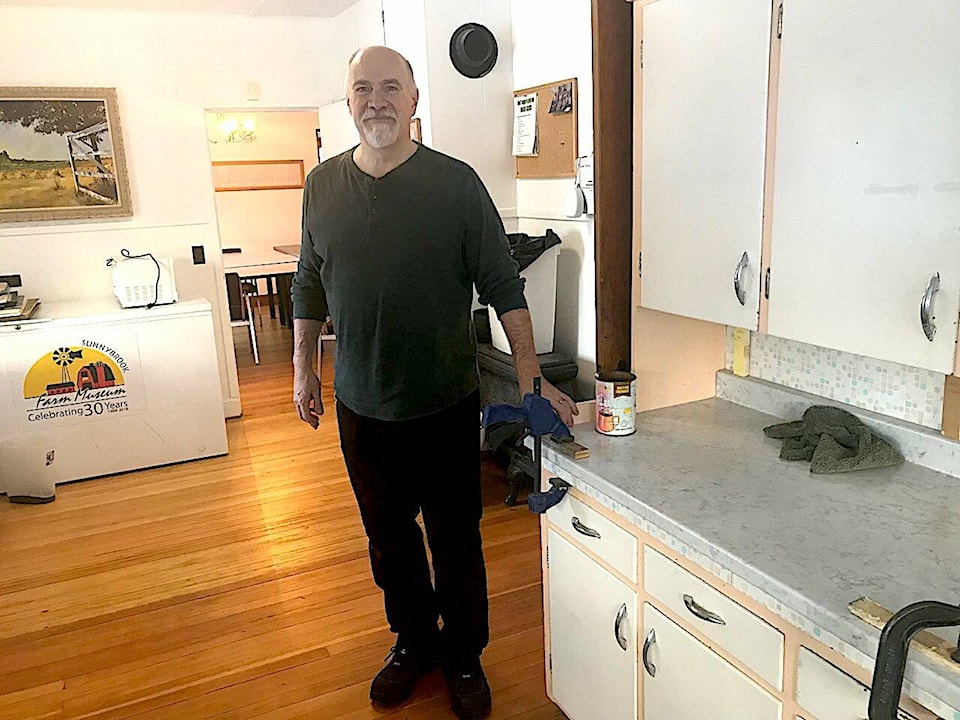Discussions are brewing about the future of the little grey house at Red Deer’s Sunnybrook Farm Museum — and other new projects.
The 81-year-old Bower farm house, which sits on the north side of the museum property at the curve of 30th Street and 47th Avenue, is getting an update with the original pine floors now exposed.
Museum executive-director Ian Warwick said the residence from 1942 will continue to be rented out by various local community groups for the foreseeable future, including the Red Deer Aboriginal Dance Troupe and Parkland Weavers.
But the hope is to someday appropriately furnish and open this shingled house to the public as an example of the farm homes commonly seen across Central Alberta in the mid-20th Century.
Warwick noted this project must be viewed through a wider lens.
Since being hired 12 years ago, most of Warwick’s goals have come to fruition, including bringing a rural church and schoolhouse onto to the museum property.
He feels it’s now time to look further down the road.
Among the new ideas being explored is building a new barn-shaped interpretive centre to show other aspects of rural life in by-gone days. Creating a dance hall on its upper storey that could be rented for weddings and other large events, is also being floated, said Warwick.
Further discussions and public input will be needed — as well as about $5 million of fundraising, he added.
Meanwhile, painting and other interior renovations were done on the unassuming grey shingled farm house, with help from a team of skilled Bowden Institution inmates on a work program.
Warwick was delighted when the workers found original pine floors under some lifted linoleum. The sanded and refinished wood floors now run throughout most of the house.
The modest residence was constructed in the early 1940s by Norman Bower, a son of James and Catherine Bower, who arrived in central Alberta from Ontario in 1899.
James, an industrialist and early purveyor of electricity to the Orangeville area, had wanted to try his luck further west, but missed his train in Red Deer and ended up buying some local land.
The Bower family property became much of south Red Deer.
James eventually built a grand, two-storey brick residence for his family and raised Percheron horses and shorthorn cattle. As president of the United Farmers of Alberta, he met with Canadian Prime Minister Wilfred Laurier to advocate for freer trade.
While James and Catherine had raised their nine children in the brick house that once sat immediately north of the little grey farmhouse, this elaborate family home was wrecked by their son Norman after he built his modest grey-shingled abode.
Warwick imagines the large house fell into disrepair and practical Norman had a simpler residence in mind for his wife Iva and their five children. “A smaller house would have cost less to heat.”
Just as James once owned the first International gasoline tractor sold in Western Canada, Norman was also an early adaptor of new equipment, investing in one of the first ploughs that cultivated crops without much disturbance to the soil surface, conserving moisture.
Besides being proponents of agricultural improvements, the family was a big supporter of the Red Deer Exhibition and other community initiatives.
This became further evident in 1987, when Norman donated 10-acres of his land for the creation of the Sunnybrook Farm Museum to preserve the rural lifestyle in the early days of Alberta agriculture.
Warwick said Norman continued living in the little grey house for 12 years after donating the land. The old farmer liked seeing vintage ploughs and other equipment being brought onto the property.
Before his death in 2002, “he used to sit on a stump, listening to the volunteers giving programs to the kids… he just loved it,” he added.
The Bower sisters, who are nieces of Norman’s, are donating original family furniture to the museum. Warwick said it will be eventually be incorporated into the grey farmhouse — or into a future interpretive centre.
lmichelin@reddeeradvocate.com
Like us on Facebook and follow us on Twitter


